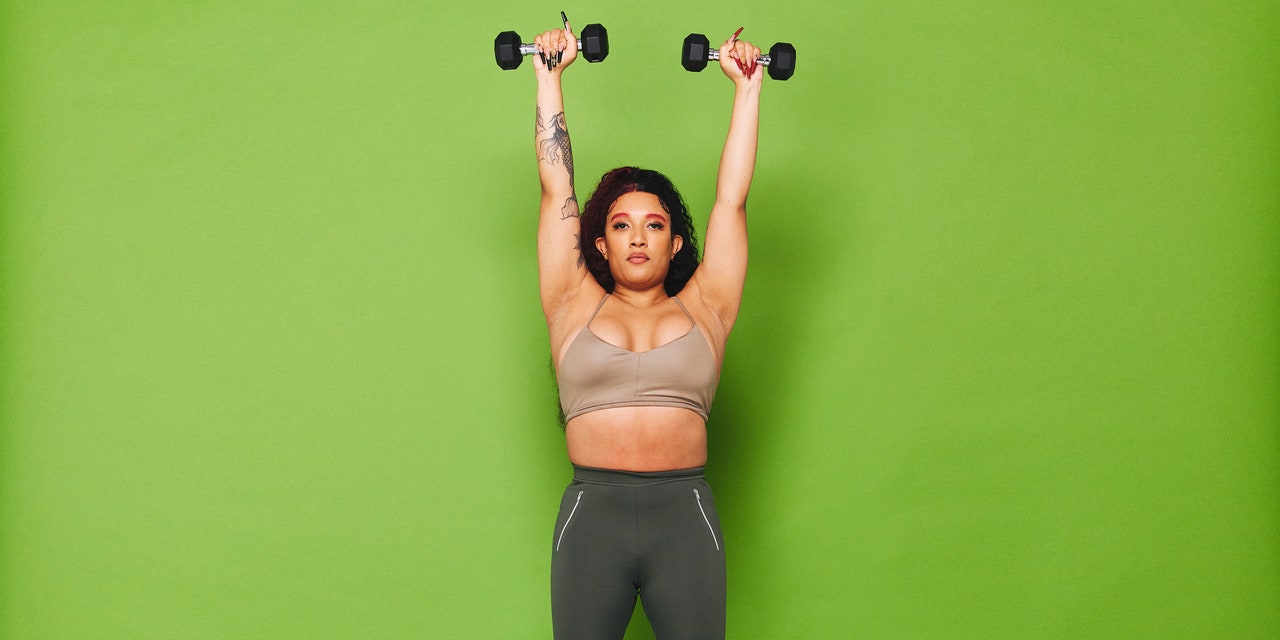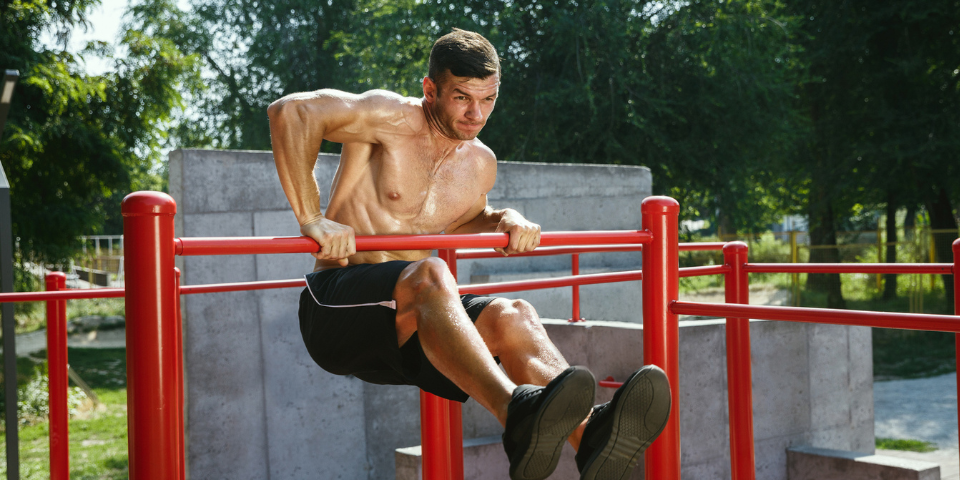7 Strength Moves You Should Be Doing in Your 30s

All products are independently selected by our editors. If you buy something, we may earn an affiliate commission.
Despite what scrolling through GymTok might have you think, exercise doesn’t need to be complex or fancy to be effective. Sure, there are hundreds of options out there for different moves or modalities, but sticking to the tried-and-true basics will get you the best results—and that’s especially true as you get older, reaching your 30s and beyond.
Not that we’re calling 30 old. For tons of folks, that’s when life really just starts to get good! But the decade is also somewhat of a health-and-fitness tipping point for many. “Once people hit their 30s, they start to notice aches and pains and imbalances that they may not have felt in their 20s,” Joe Meier, CPT, personal training leader at Life Time and author of Lift for Life, tells SELF. (If you felt like you woke up on your 30th birthday and suddenly had lower back pain, same). It’s true that there are some big changes happening in your muscles around this time (more on that later) and, realistically, your joints and their supporting tissues endure more wear and tear the older you get.
And then there’s the fact that lifestyle factors may slow you down and make it harder to stay as active as you once were, leaving you less conditioned and more prone to little tweaks and injuries. Take your 20s: Then, you may have had the time and disposable income to try the newest workout fads—and hit the classes on the regular. But in your 30s, certain factors can force you to put physical activity on the back burner, Pete McCall, MS, CSCS, exercise science expert and author of Ageless Intensity: Effective Workouts to Slow the Aging Process, tells SELF. “Your career starts to take off, so you likely get more responsibilities at work and more opportunities to travel; you may also be growing your family,” he says. “Overall, your responsibilities change.” As a result, it can be easy to let exercise fall far down on your list of priorities.
Below, experts share why it’s so important to prioritize strength training as you get older and some of the simplest ways to work it into your routine so that it’s a non-negotiable part of your life.
Once you hit your 30s, consistent exercise becomes even more important—for the present and for the long haul.
In fact, it’s arguably the time in your life when you need a well-rounded routine the most. “The 30s are when people can really solidify habits that they’re going to keep in their 40s, 50s, and beyond,” says Meier. “If you have your habits—say, you go to yoga three times a week or have a favorite fitness studio and classes you take regularly—it’s a part of your life. It isn’t even a second thought,” McCall says. This all makes it more likely you’ll fit intentional movement into your busy schedule.
There are endless reasons you should keep up with movement as you age, which all essentially come back to the main goal: to stay functional and ward off aches and pains. “Having a good strength routine can help you build and maintain muscle mass, which is critical to maintaining your physical and mental health as you age,” Amy Potter, CPT, personal trainer in Hermosa Beach and strength coach at Ladies Who Lift, tells SELF. “Think of muscle mass as your body’s 401(k). Investing time and energy into building a solid strength training routine is an investment in your future health and the return on investment is invaluable.” That’s because muscle mass allows you to keep doing the activities you enjoy, supports metabolic health, reduces the risk of chronic diseases, and so much more.
And unfortunately, if you don’t use it you lose it—faster than you may expect. “Around the age of 30, we typically begin to experience a gradual decline in muscle mass,” Potter says. “On average, adults lose about 3% to 5% of muscle mass per decade after this age if they don’t engage in regular strength training or physical activity.” When muscle loss worsens, it’s known as sarcopenia, a condition that can lead to decreased strength, endurance, and mobility, and as you age even more, loss of independence, she adds. This can ultimately increase your risk of falls and injuries later in life.
In fact, according to a 2017 study, older adults with low muscle mass were 65% more likely to lose their physical independence at 90 or above, while those with low muscle function were six times as likely.
But the good news is, there are things you can do to stave it off—and it starts decades earlier. “Incorporating resistance training, maintaining a balanced diet, and staying active can help preserve muscle mass and promote overall health,” says Potter. Exercise also helps your bones rebuild and stay strong, reducing your risk of developing osteoporosis (which gets more common with age too) and fractures if you do fall.
Which brings us to this: By focusing on a handful of essential movement patterns, and building your strength workouts around those, you can make sure your routine hits all the important muscles and movements that you need to work on to develop balanced strength and function at your best over time. Getting back to basics will make it easier to build a solid foundation of strength and stability that you can easily build on as you progress—setting you up for success for the long haul, without any extra noise or complications getting in the way.
Here are the best essential movements for your 30s and beyond.
Below, experts share the essential movements you should be including in your resistance training routine in your 30s.
1. Push
Katie Thompson
Why it’s important: “Including push exercises helps build upper-body strength, including your chest, shoulders, and triceps, which is important for daily activities like pushing your body up to a seated position when you’re lying down; pushing a stroller, golf cart or grocery cart; and lifting things overhead like putting an item on a shelf or stowing your carry-on in the overhead bin on an airplane,” Potter says.
“Pushing motions also might be one of the first things a person in their 30s and beyond needs to modify to be able to do comfortably,” adds Meier. That’s because the shoulder joint is a common source of pain or discomfort for people in this decade of life, he notes. That’s why it’s important to build this strength early, so that you go into it with the muscles and surrounding tissues as in-shape as possible. And if you do find that these movements start to cause pain as you get older, despite your best efforts, it’s important to modify them so that you can keep doing them (to some extent) without injuring yourself.
Example: Overhead press (pictured above); chest press; push-up
Give it a try: In this dumbbell shoulder workout and this dumbbell chest workout
2. Pull
Katie Thompson
Why it’s important: “Pulling movements utilize the back and biceps,” says Meier. “Strengthening these muscles helps maintain good posture, prevent shoulder and neck pain, and counteract the effects of a sedentary lifestyle, which can be increasingly important with age,” says Potter. “Pulling movements also improve grip strength, which is often used as a proxy for measuring overall strength and has been positively correlated with longevity.”
Example: Bent-over row (pictured above); pull-up; lat pull-down
Give it a try: In this dumbbell back and biceps workout and this kettlebell back workout
3. Hinge
Katie Thompson
Why it’s important: Simply put, a hinge is the motion of bending forward at the hips and pushing your butt back while your spine stays neutral, or straight. “Hinge exercises primarily work your glutes and hamstrings, along with your back muscles, core, and grip strength,” says Potter. “These movements are vital for building strength in the hips and lower body, which supports better functional movement and reduces the risk of injuries, particularly as muscle mass naturally declines with age.” A hinge also teaches you how to bend over and pick something up off the floor while maintaining a neutral spine—which means you can avoid tweaking your back, she adds.
Example: Romanian deadlift (pictured above); glute bridge; kettlebell swing
Give it a try: In this squat-free butt workout and this 10-minute kettlebell glute workout
4. Squat
Katie Thompson
Why it’s important: “Squatting is essential for everyday activities like sitting, standing, and climbing stairs, making it particularly important for maintaining independence and functional fitness as you age,” says Potter. The movement is also great for building lower-body strength. “A person should choose a squat that feels good on their body and allows them to progress over time by increasing range of motion, reps, or weight,” says Meier.
Example: Goblet squat (pictured above); suitcase squat; sumo squat
Give it a try: In this lower-body workout and this bodyweight legs and abs workout
5. Single-Leg
Katie Thompson
Why it’s important: Another thing that tends to decline with age if we don’t actively work on it? Balance. “Single-leg squat variations like lunges are also important for balance and stability,” says Potter. They also mimic actions in your everyday life that demand a decent level of balance to execute, says Meier. “Going up and down stairs, hiking, getting up off the floor, or getting into and out of a car resemble lunge-type movements,” he notes.
Example: Forward to reverse lunge (pictured above); single-leg deadlift; split squat
Give it a try: In this dumbbell legs workout and this bodyweight lower-body workout
6. Rotate
Katie Thompson
Why it’s important: “These exercises primarily work our core, along with our upper and lower body depending on the variation,” says Potter. “These are important for daily activities that require rotational strength and mobility, such as twisting and reaching, which can become more difficult with age.”
Example: Windmill (pictured above); rotational medicine ball toss; wood-chop
Give it a try: In this kettlebell workout and this dumbbell core and arms workout
7. Core Stability
Katie Thompson
Why it’s important: There are numerous ways to work core stability and balance, but the overarching goal is to resist movement—which is why Meier notes carries and isometric holds as example, and Potter refers to them as “The Antis”: anti-rotation, anti-flexion, and anti-extension. “These movements are essential for preventing injuries and improving overall core strength, which supports better posture and functional movements in daily life,” says Potter. “They are also applicable to daily activities, such as carrying groceries, a child or your dog in one arm, maintaining balance while holding onto a railing on a moving metro train, and maintaining stability if you get bumped into.” As McCall puts it: “One thing we do as humans is we carry things.”
Example: Plank variations (pictured above); suitcase carry; Pallof press
Give it a try: In this kettlebell abs workout and this plank and squat workout
Demoing the moves above are DJ Rock (GIF 1), a group fitness instructor, personal trainer, and certified mat Pilates instructor; Alicia Jamison (GIF 2), senior coach at Body Space Fitness and adjunct lecturer at Brooklyn College; Billy Anslow-O’Rourke (GIF 3), doctor of physical therapy and Queens-based group fitness instructor; Morit Summers (GIF 4-5), a Brooklyn-based trainer and the owner of body-positive gym, Form Fitness Brooklyn; Amanda Ting, DPT, CSCS (GIF 6), a personal trainer at Mark Fisher Fitness in NYC; and Laura Girard, a NASM-certified personal trainer and founder of the Energy Academy.
Related:





